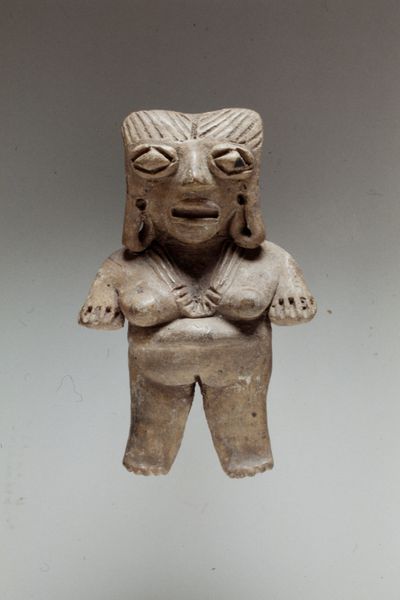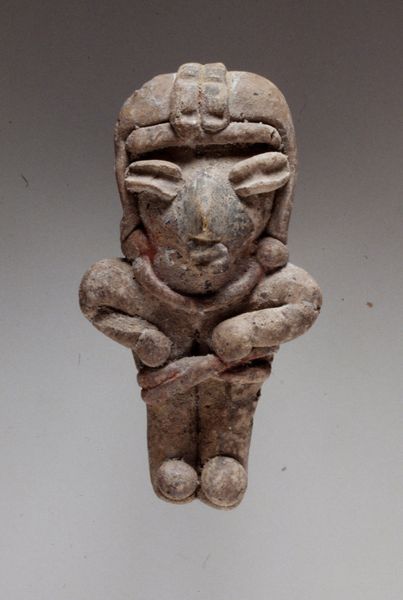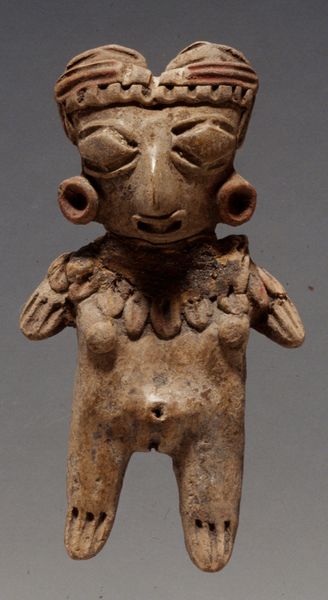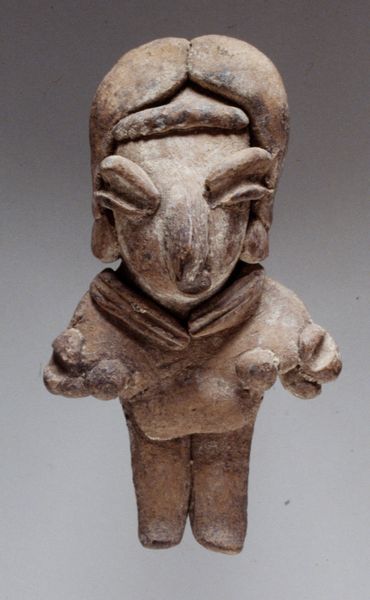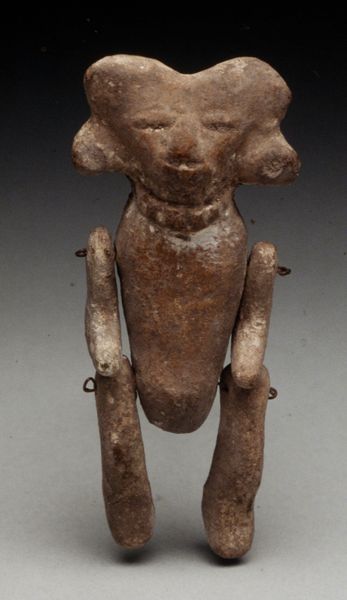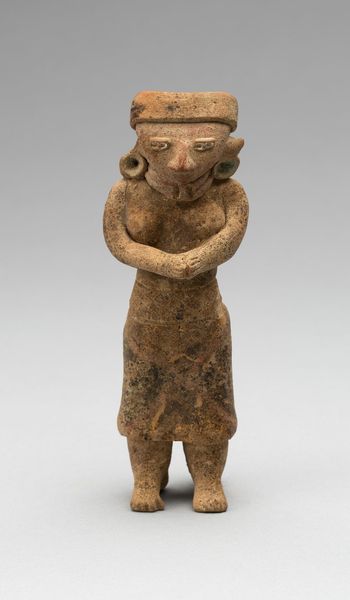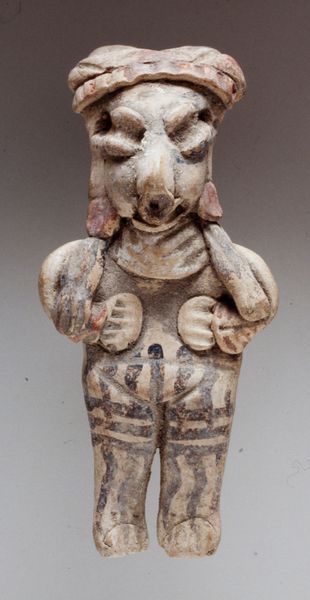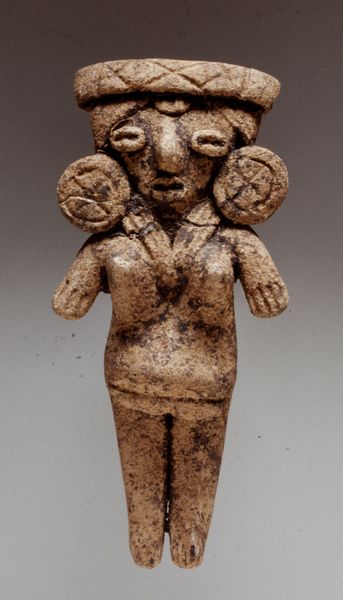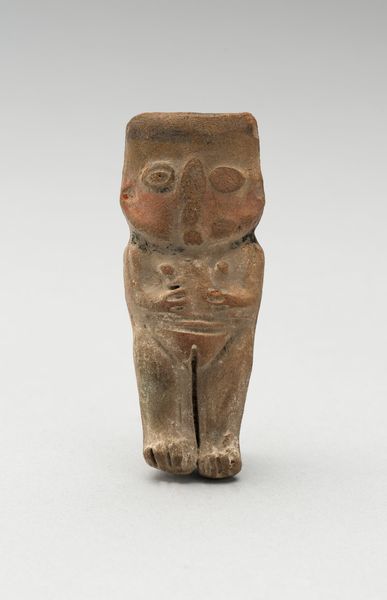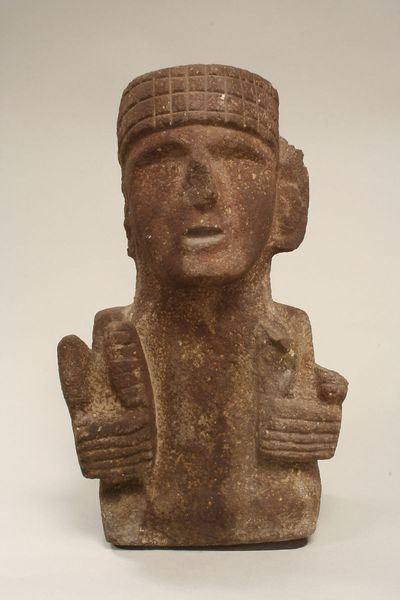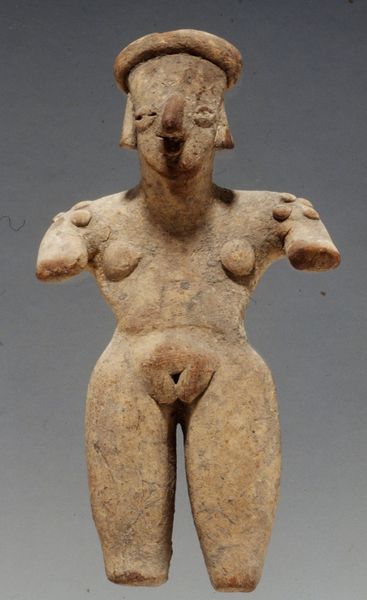
ceramic, earthenware, sculpture, terracotta
#
sculpture
#
ceramic
#
figuration
#
earthenware
#
sculpting
#
sculpture
#
terracotta
#
statue
#
indigenous-americas
Copyright: Public Domain
Curator: I am struck by the raw expressiveness of this work. "Standing female figure" is its unassuming title, but I find it utterly compelling. It was crafted by an artist of the Nayarit culture, somewhere between 100 and 250 AD. Editor: My first impression? Earthy. She seems made entirely of the ground she stands on, or maybe she grew directly from it! There’s a feeling of solidity and a kind of quiet resilience in those stubby limbs and determined little face. Curator: These ceramic figures offer profound insights into Nayarit society. Considering the lack of written language, these figures provide invaluable information about their cultural values and practices, including potentially female leadership or significant roles held by women. The hands resting so prominently on her stomach may reference fertility, or a generative capacity beyond the mere biological. Editor: Absolutely. Those hands! They're so carefully placed, like she's guarding something precious, or deep in thought. And the hat. What’s the story there, some sort of status symbol? I feel an immense sense of presence with this woman, despite the distance of centuries. What I’d give to sit down and have a cup of something warm with her! Curator: Her headwear does invite speculation. Perhaps it signified social status, lineage, or ritual role. These ceramic sculptures often feature distinctive attire and ornamentation, signaling aspects of identity, and in alignment with current gender theory, potentially offering an important view of Nayarit women's self-conception. It challenges normative historical views on female presence in early societies. Editor: The simplicity is deceiving; every detail seems laden with intention. The textures! You can almost feel the potter's fingers molding the clay. Curator: Precisely! By engaging with the sculpture, its original function in funerary or ritual contexts is deeply felt and helps broaden understandings about the past. We need to consider what it has to say about gender and class dynamics within that society. Editor: Seeing this figure today, I'm not just admiring art; I’m feeling a kinship with someone who lived so long ago, carrying their own mysteries and dreams. She's a reminder of the enduring power of the human spirit. Curator: Indeed. And through continued dialogue with these figures, we learn, hopefully, a little more about our shared heritage, challenging prevailing assumptions and amplifying marginalized voices within the narratives of our past.
Comments
No comments
Be the first to comment and join the conversation on the ultimate creative platform.
